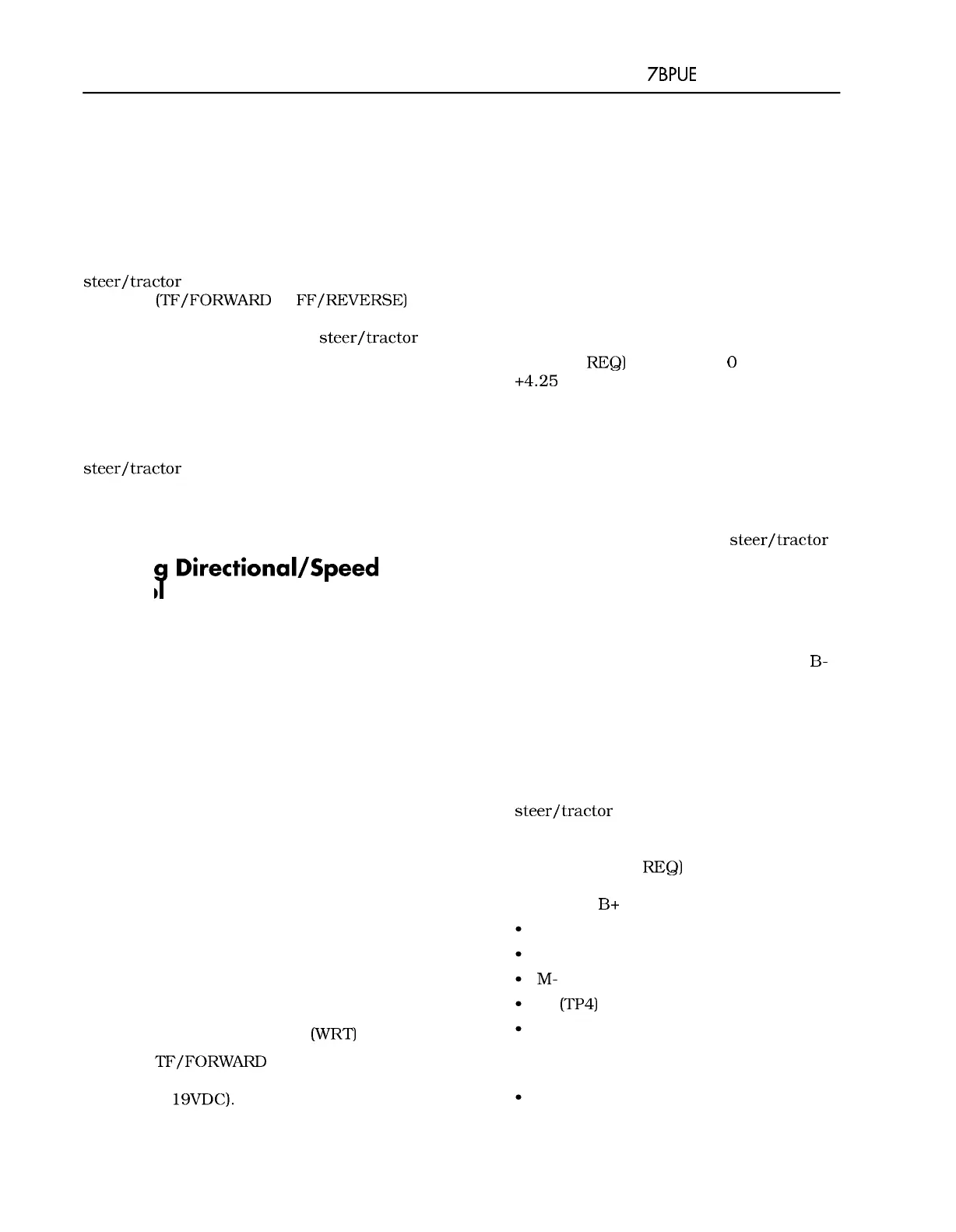Section
9.
Theory of Operation Toyota Orderpicker Model
7BPUE
15 Service Manual
Travel
Travel
General
When the potentiometer voltage increases or
decreases from the neutral deadband, the
steer/tractor manager sends a travel request for
direction
(TF/FORWARD or FF/REVERSE) and
speed (TRAVEL REQ) to the traction power
amplifier. The voltage from the
steer/tractor
manager is directly related to the speed request.
As the input request changes, the travel request
voltage to the traction power amplifier mirrors
the change.
When a change in direction is requested, the
steer/tractor manager changes the direction
request to the traction power amplifier and
changes the speed request output (TRAVEL
REQ) to reflect the requested plugging strength.
Movin Directional/Speed
7
Contro
See the schematic in Figure 9
-
5 on page 9
-
24.
(The electrical schematic legend is on page 9
-
2.)
N
OTE
:
The current flowing through the drive
motor armature and field windings are
controlled independently of each other
by the traction power amplifier.
1. When the throttle is moved to the forward
position (tractor
-
first)
,
the wiper in the
variable resistor (VR
-
1) is moved so that
the voltage output decreases. The carriage
manager, sensing this decrease in voltage,
sends a communication message over the
transmit line to the tractor manager. The
tractor manager interprets this as a
request for travel in the forward direction
and causes the following to occur:
N
OTE
:
For clarity and simplification, only
circuits directly related to vehicle travel
will be traced on the remaining
operation of the travel system diagram.
All are with respect to
(WRT) TP4 (B
-
).
2. The
TF/FORWARD line to the traction
power amplifier is activated (driven to
about
19VDC). This is the input to the
traction power amplifier which will
determine the drive motor field polarity to
enable travel in the forward direction.
3.
The traction power amplifier will then drive
its internal field control transistors to turn
the drive motor in the correct direction.
4. Simultaneously an analog voltage, which
represents and is proportional to the
throttle command, is outputted from the
steer tractor manager and sent to the
traction power amplifier. This voltage
(TRAVEL
REQ) ranges from
0
to about
+4.25 VDC depending on throttle input
WRT TRAVEL REF. Based on this, the TPA
will control the strength of the field and
armature to obtain the proper travel speed
in the appropriate amount of time. The
higher the voltage the faster the TPA will
make the truck travel.
N
OTE
:
Travel speed is limited until the operator
requests steering and the
steer/tractor
manager detects the request.
5. The TRAVEL REQ voltage is used by the
traction power amplifier to drive the
armature and field transistors to meet the
throttle request. The armature transistor
is, in effect, connecting terminal M
-
to B-
(in varying amounts) allowing current to
flow through the drive motor armature.
The traction power amplifier will also drive
its internal field transistors which, in turn,
will control the amount and direction of
flow through the drive motor field winding.
When a plug is requested, the
steer/tractor manager changes the
direction request to the traction power
amplifier and changes the speed request
output (TRAVEL
REQ) to reflect the
requested plugging strength. Current now
flows from
B+ through:
FU3
Drive motor armature
M-
B
-
(TP4)
To battery negative
6.
During operation, the traction power
amplifier monitors for:
Armature current*
9
-
2 2
00700
-
CL222
-
05,
1
5
March 2005

